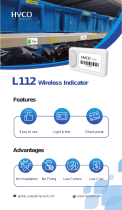
10
FOREWORD
The contents of this manual are generic and not all the functions described may be available on your
product.
The manufacturer declines all responsibility for possible inaccuracies contained in this pamphlet, due to printing
or copy errors. We reserve the right to make on our own products those changes to be considered necessary or
useful, without jeopardizing the essential characteristics.
Read the instructions for use very carefully paying particular attention to the rules concerning safety devices. This
appliance must only be used for what it has been designed for and built for and that is: all baking of dishes and
regenerating pre-cooked and/or frozen food.
WARNING!
Before making any type of connection of this equipment (electrical or hydraulic), carefully read the instructions
in this manual. This manual must be carefully kept to be available for future reference by users or service tech-
nicians. Installation must be carried out by d qualied personnel only.
1.0 DECLARATION OF CONFORMITY
The Manufacturer declares that the appliances conform to the EEC norms.
They must be installed in accordance with current standards, especially regarding aeration of the premises and
the exhaust gas evacuation system.
Note: The Manufacturer declines all and every responsibility for any direct damages caused by: an
incorrect use, wrong installation or bad maintenance.
1.1 EUROPEAN DIRECTIVE ROHS 2012/19/UE
This appliance is marked according to the European directive 2012/19/UE on Waste Electrical and Electronic
Equipment (WEEE). By ensuring this product is disposed correctly, you will help prevent potential negative con-
sequences for the environment and human health, which could otherwise be caused by inappropriate waste han-
dling of this product.
The symbol on the product, or on the documents accompanying the product, indicates that this
appliance may not be treated as household waste.
Instead it shall be handed over to the applicable collection point for the recycling of electrical
and electronic equipment.
Disposal must be carried out in accordance with local environmental regulations for waste dis-
posal.
1.3 TRANSPORT OF THE OVEN AND PACKAGING REMOVAL
Upon receipt of the oven and before installing it, check the packaging is intact and there are not visible damages.
Also check that along with the oven you receive also the documentation, consisting of:
• Instructions for installation, use and maintenance
• Chart to check correct installation
• Wiring diagram
• Label ISO 3864-1
Before bringing the oven to the point, where it must be installed, check the following:
The doors are large enough to allow passage of the oven
The oor supports the weight.
According to the model of oven, its dimensions and its weight, use suitable facilities to handle goods during trans-
port and installation, able to guarantee stability in order to avoid overturning, falls or uncontrolled movements of
the appliance or its components.
Keep the oven packed until you reach the site where the oven is going to be installed.
The packaging makes the handling of goods easier and protects the oven from accidental push.
During moving and installation of the oven, the installer must comply with accident-prevention regulations in
force at the place of installation (use of safety shoes, gloves, etc.) Remove the packaging taking care not to dam-
age the oven. The adhesive lm, that protects the surfaces made of stainless steel can be removed also after you
have positioned the oven on the corresponding stand or the support surface.
ATTENTION: Packaging materials and adhesive lm are potentially dangerous.
For this reason, they must be kept out of the reach of children and properly disposed of in com-
pliance with local directives.
You should separate packaging materials (wood, cardboard, plastic...) and dispose of them se-
parately, in compliance with directives in force at installation site.
Note: Take the protective lm o the stainless steel parts by hand before starting the appliance.
Do not use abrasive substances and/or metal objects. Clear any adhesive residues using a sponge soaked in sol-
vent. If the oven is heated up before removing the adhesive lm, the removal of the lm and cleaning of residues
of glue will be much more dicult.
EN




















